Jodhpur the Blue City
A beautiful city in India
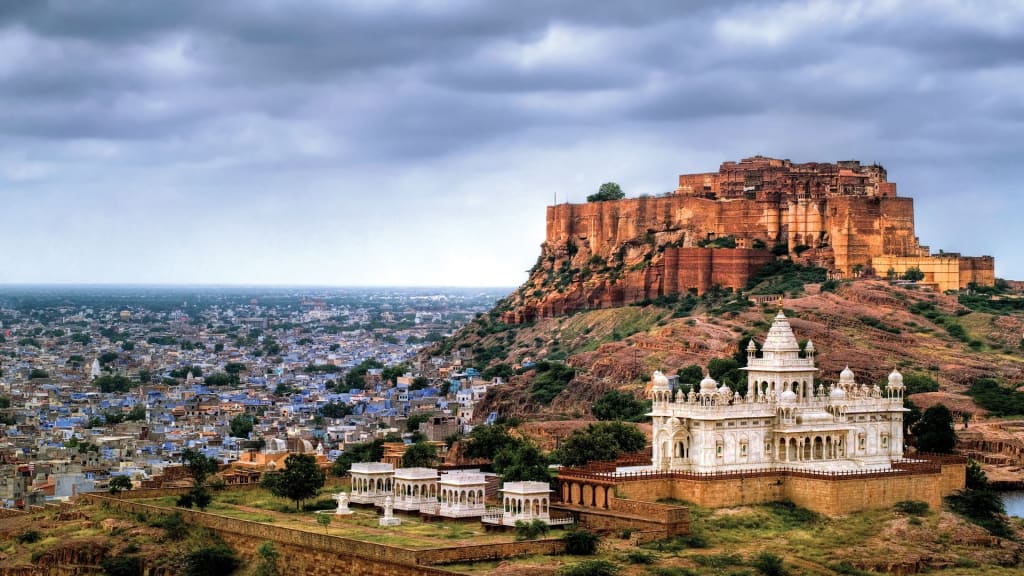
Blue is the dominant color of the buildings and walls in the Old City as far as the eye can see. There are many wonders that Jodhpur can offer and is located in the Thar Desert of the northwest Indian state of Rajasthan. Traditionally, blue signified the home of a Brahmin, but there are non-Brahmins here too. The blue appears to glow with a mysterious light and the blue tint is thought to repel insects. It is also known as the “Sun City” because the city enjoys bright and sunny weather all through the year. The Old City circles the fort and is bounded by a wall with several gates. Of course, this city has now expanded greatly beyond the Old Blue City.
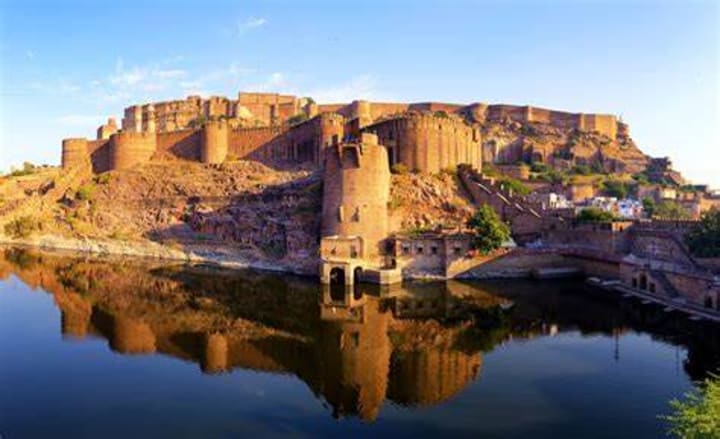
Mehrangarh is one of the most magnificent forts in India. It is perched upon a rocky hill that stands 120m above Jodhpur’s skyline. The fort battlements are 6m to 36m high and have been chiseled from the rock upon which it stands. The fort is still run by the Jodhpur royal family and is full of history and legend. The main entrance is at the northeast gate, Jai Pol. It’s about a 300m walk from the Old City to the entrance or you can choose to take a winding 5km auto rickshaw ride.
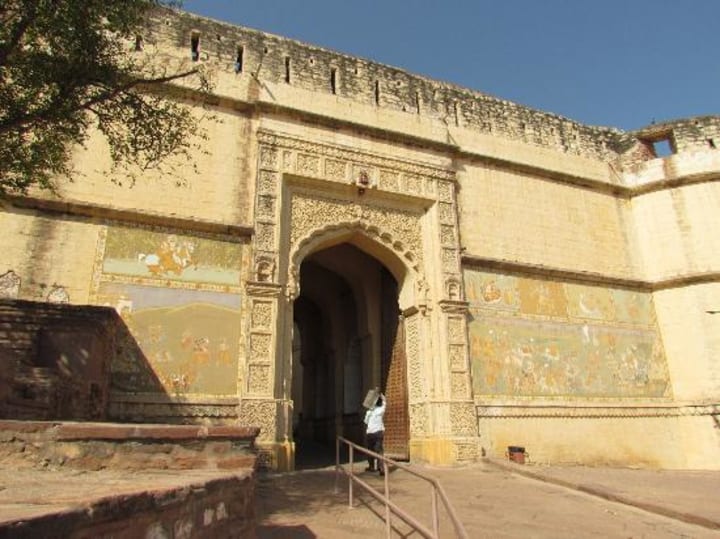
Jai Pol was built by Maharaja Man Singh in 1808 following his defeat of invading forces from Jaipur. The 16th-century Dodh Kangra Pol used to be an external gate before Jai Pol was built and you can still see the scars of 1808 cannonball hits. Once you’ve passed through Jai Pol the main route leads to the left through the 16th century Imritia Pol and then Loha Pol, the fort’s original entrance, with iron spikes to deter enemy elephants. Just inside of the gates are two sets of small hand prints, the sati (self-immolation) marks of royal widows who threw themselves on their maharajas’ funeral pyres – the last to do this was Maharaja Man Singh’s widow in 1843.
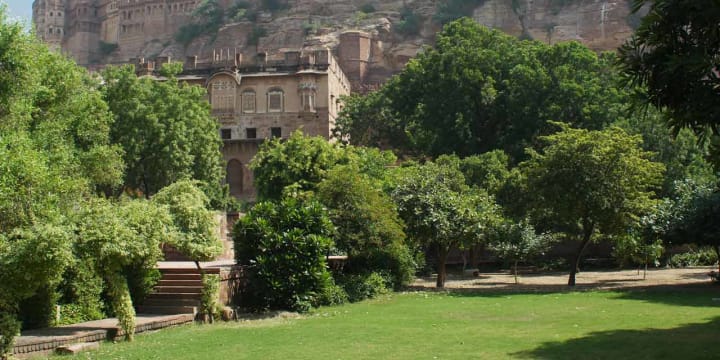
Also worth exploring is heading right from Jai Pol, where the path winds down to Chokelao Bagh, a restored and lovely Rajput garden that was planted in the 18th century and then you can exit through the Fateh Pol into the old city quarter of Navchokiya.
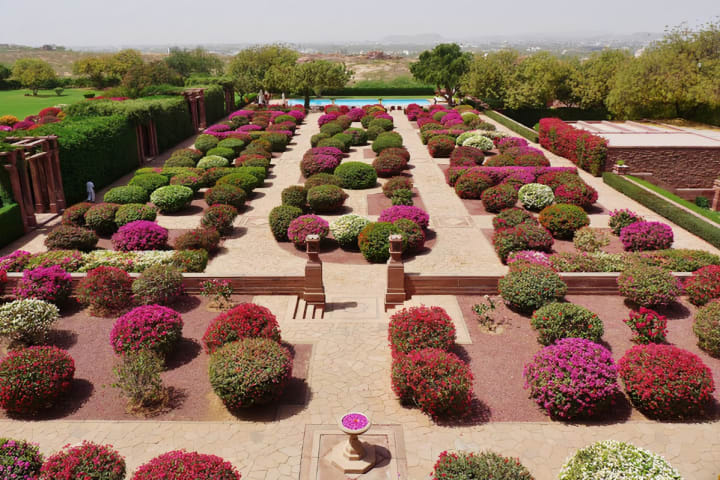
One of the largest gardens in Rajasthan is Umed Garden. This popular garden offers visitors a green lawn, blooming flowers, and lots of other things to delight the eye. You can learn a lot about the rich history of the region’s past in the many forts and palaces to explore here. The garden spreads out over 82 acres and has been made so that visitors can stroll about and enjoy the flora and fauna. It is located close to the Umaid Palace.
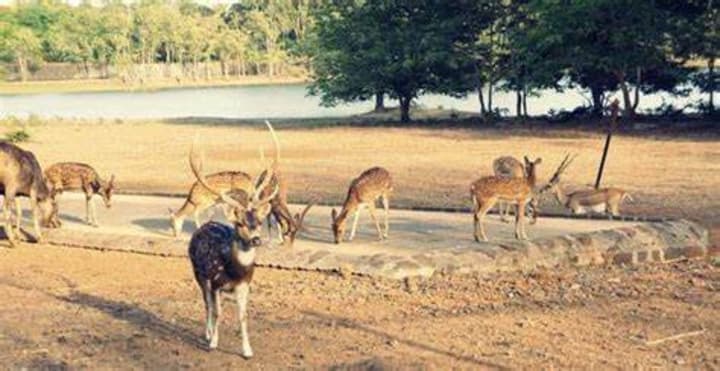
Roses dominate this garden and there are tall Ashoka trees, sparkling fountains, and even a zoo. At the zoo, you can see many different birds in their natural environment. Among the animals on display are many varieties of crocodiles, monkeys, deer, leopards, lions, tigers, ostriches, zebras, and emus. The garden is constructed so that you can enter it through any one of the five gates which bring you to different locations of the garden. The garden was conceived for the purpose of educating kids about the beauty of nature and the importance of protecting it.
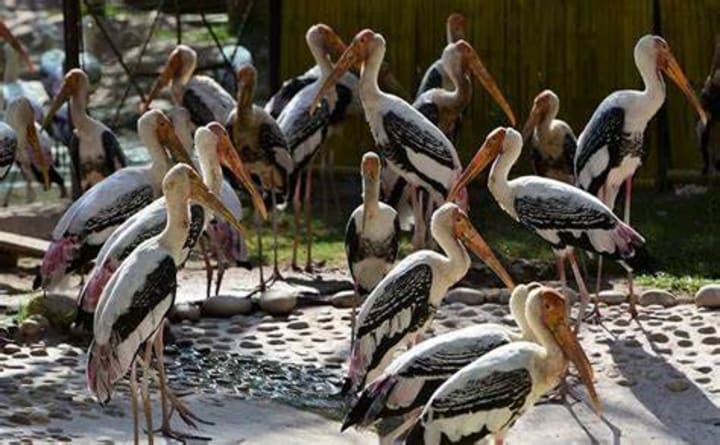
Umed Garden has a Walk-In Aviary constructed in 1978 which is home to many common and exotic birds. There are African and Australian parrots and ducks swimming in a pond. All of the birds and animals live in their natural surroundings. Opposite the aviary is a large cage for bears. Take the time to visit The Government Museum which is within the garden complex and is a major tourist attraction.

Sardar Government Museum was built as an impressive example of Rajput architecture carved from sandstone. The galleries around Shringar Chowk or Anointment Courtyard display India’s best collection of elephant howdahs and Jodhpur’s royal palanquin collection.

Rao Jodha Desert Rock Park is a 72-hectare park that sits in the lee of Mehrangarh. It has been restored and planted with native species to show visitors the natural diversity of the region.

The park has walking trails that will take you up to the city walls, around Devkund Lake where you can see local birds, butterflies, and reptiles. There is also the lovely Devkund Waterfall. If you prefer, you can take along a local guide who can inform you about the native flora and fauna. The most pleasant temperatures are in the early morning or in the late afternoon. There is a visitor center and a small cafe.

Mandor Garden is situated 9km north of Jodhpur center. Mandor was the capital of Marwar prior to the founding of Jodhpur. The gardens have rock terraces and are home to playful gray langurs. There is the soaring Chhatri of Maharaja Dhiraj Ajit Singh, combining Buddhist and Jain elements in its architecture. This enormous, edifice has a high spire, a pillared and domed forechamber, and a fine sculpture that includes small carved elephants and lions. The memorial also marks the spot where 64 queens and concubines committed sati on Ajit Singh’s death in 1724.

Umaid Bhawan Palace sits on a hilltop, 3km southeast of the Old City. Gaj Singh II, the current royal incumbent, still lives in a part of the palace. It was built in 1929, designed by British architect Henry Lanchester, and has 365 rooms. The building is mortarless and incorporates 100 wagon loads of Makrana marble and Burmese teak in the interior. A large part of the building has been turned into a grand hotel. Casual visitors aren’t welcome at either the royal residence or the hotel but can visit the museum which is to one side of the building. Here you can see photos of the elegant art deco design of the palace’s interior and there is an eccentric collection of elaborate clocks. You can also see the maharaja’s highly polished classic cars, displayed in the front of the museum near the entrance gate.
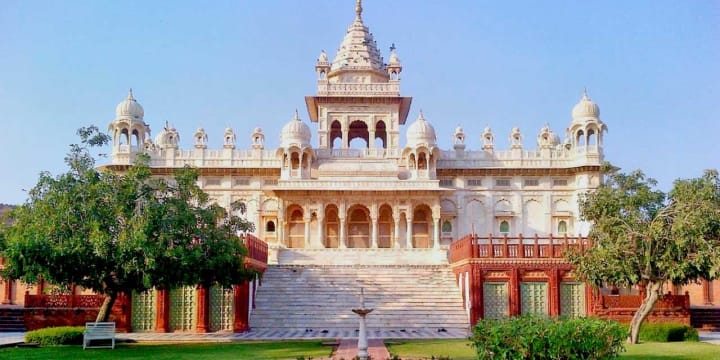
The impressive Jaswant Thada is a milky-white marble memorial to Maharaja Jaswant Singh II. It sits above a small lake 1km northeast of Mehrangarh. It’s a quiet and peaceful spot with great views of the fort and the city. It was built in 1899, the cenotaph has some lovely jalis (carved marble lattice screens) and displays portraits of Rathore rules dating back to the 13th century. There is also a memorial to a peacock that flew into a funeral pyre.

An old city landmark is the century-old clock tower which is surrounded by Sardar Market and has triple gateways at its northern and southern ends.
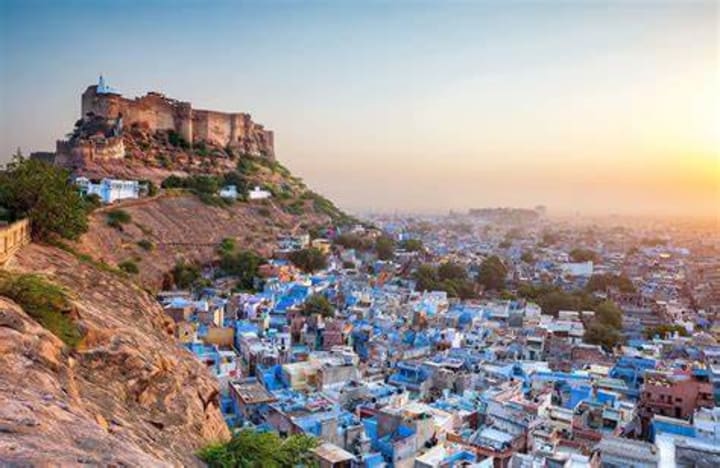
From here the narrow and winding lanes of the Old City spread out in all directions. Heading toward the west you’ll find yourself in the very heart of it with crowded alleys and bazaars that sell everything from vegetables to spices to sweets to silver and handicrafts.

Sardar Market is one of the oldest markets in Jodhpur. It may be noisy and dirty but it sure is also colorful and most likely has up to 7,000 match-box-sized shops. You can buy practically anything your heart might desire. It gets really crowded during tourist season which is just four months long and shopkeepers depend on tourists for their living.
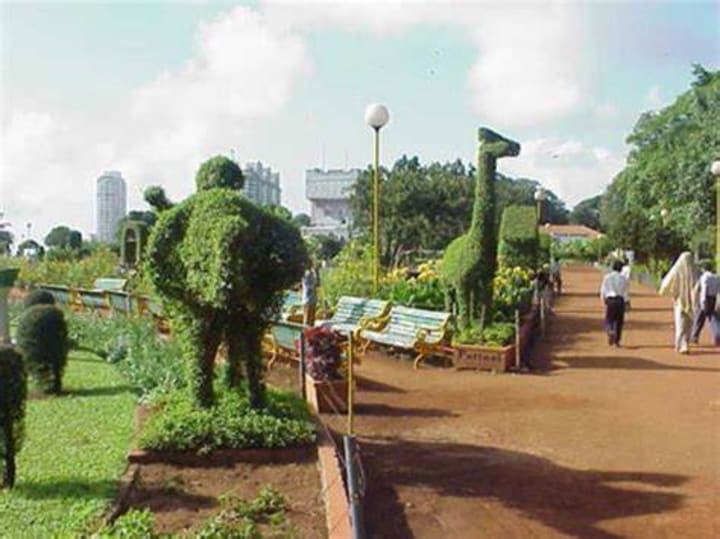
Another popular garden is Jodhpur Nehru Park, stretching for 14 acres. It was developed as a park for children. There is a fountain, a pond, swings, flowerbeds, trees, and plants.
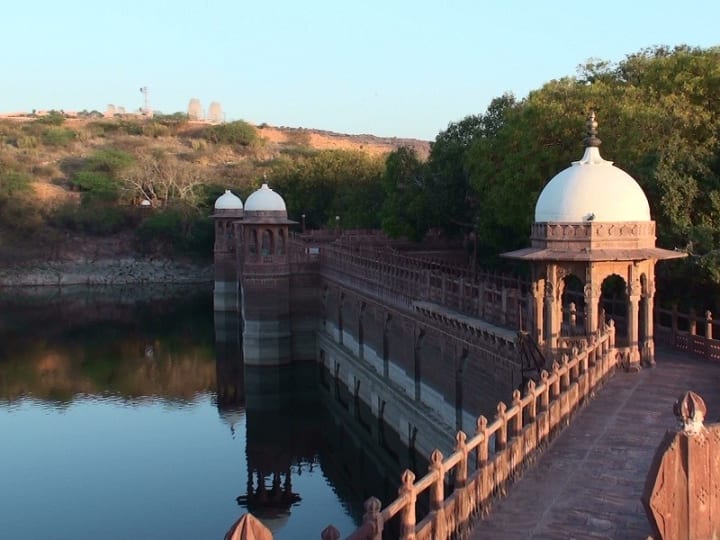
Balsammand Lake is a popular picnic spot surrounded by hills. It’s an artificial lake that was built in 1159 A.D. The lake is located about 7 km from the main city on the Jodhpur-Mandore Road.
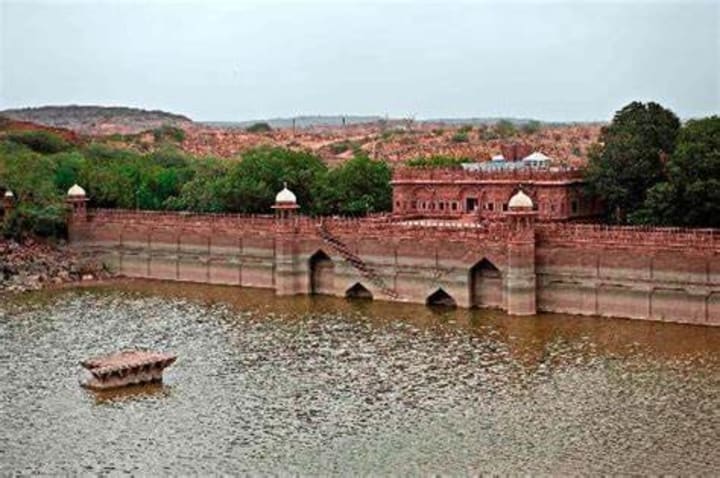
Next to the lake is Balsammand Palace, an eight-pillar palace with three entrance gates. Maharaja Sur Singh constructed the palace in 1936 as a summer pavilion.
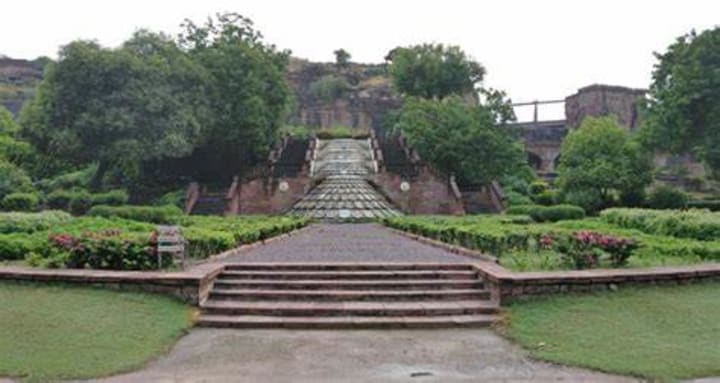
The lake is surrounded by lush, green gardens. You can stroll through the trees, past the rose beds, and around pools with water lilies. There are also groves of mango, guava, papaya, plum, banana, pomegranate, and other kinds of fruit. On the embankments of the lake, right in front of the palace, is a domed structure that offers fabulous views of the lake. You can also see peacocks, blue bulls, jackals, and fruit bats in the trees.
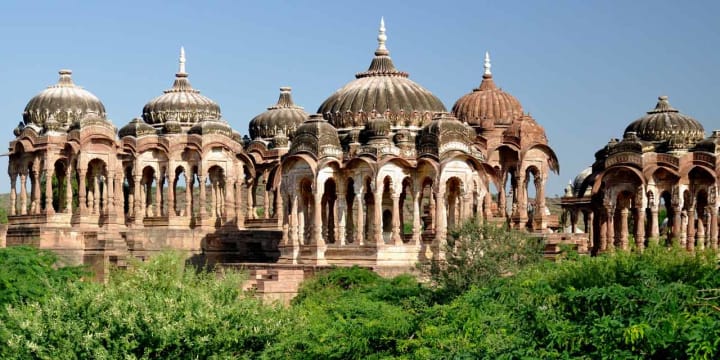
On the way to the lake, you’ll see the Maha Mandir, a hundred- pillared temple dedicated to Lord Shiva. A walled town was built around the temple.
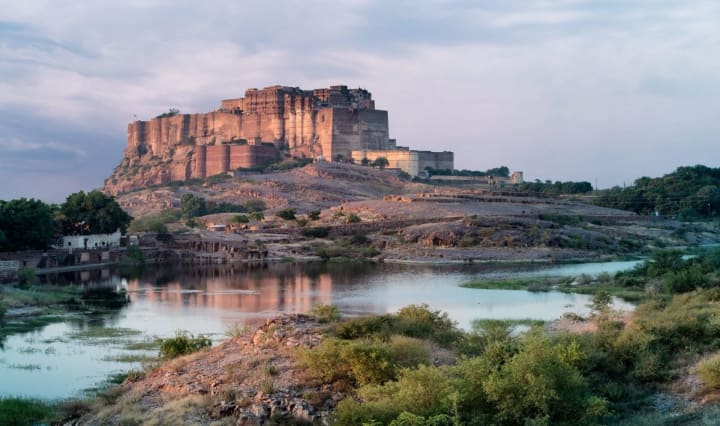
60 km south-east of Jodhpur is Sardar Samand Lake. This is a lake for bird watchers and you’ll find many different kinds of migratory birds here. Visitors enjoy the placid water and scenery. Among the birds here you can see the yellow-legged green pigeon, Himalayan griffon, and Dalmatian pelican.
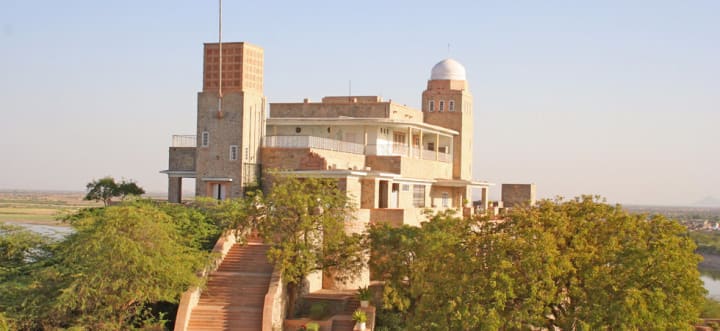
On the way to the lake, you can spot roaming wildlife of the region such as blackbucks, neelgais, and chinkaras. The countryside is dotted with lively villages and on a hill overlooking the lake stands the summer palace of Maharaja Umaid Singh. At one time it was the hunting lodge of the royal Jodhpur family and has now been converted into the Sardar Samand Lake Resort.
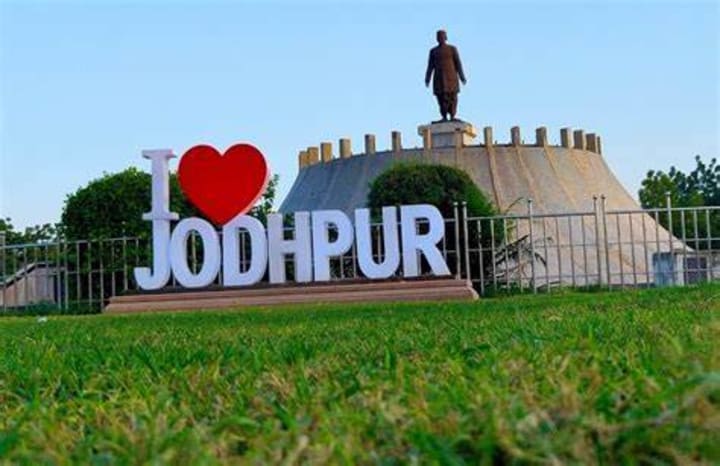
Shastri Circle is a traffic roundabout in the middle of Jodhpur. At night it looks fantastic with lights lit up and fountains.
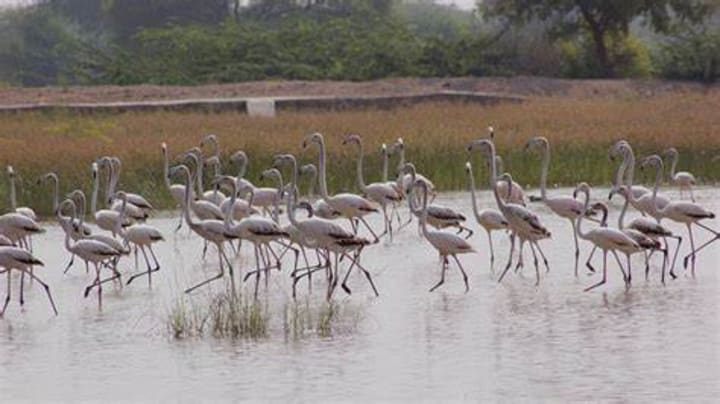
Guda is a Bishnoi village that is home to exotic wildlife and nature. It’s a habitat for thousands of migratory birds. Visitors can see Demoiselle cranes frolicking by the lake. Antelopes and blackbucks come to drink at the pond. Guda is surrounded by scenic beauty marked by Khejri trees. There is a manmade lake and the village seems like a desert oasis. It is a great place to experience and learn about traditions and customs of tribal life.
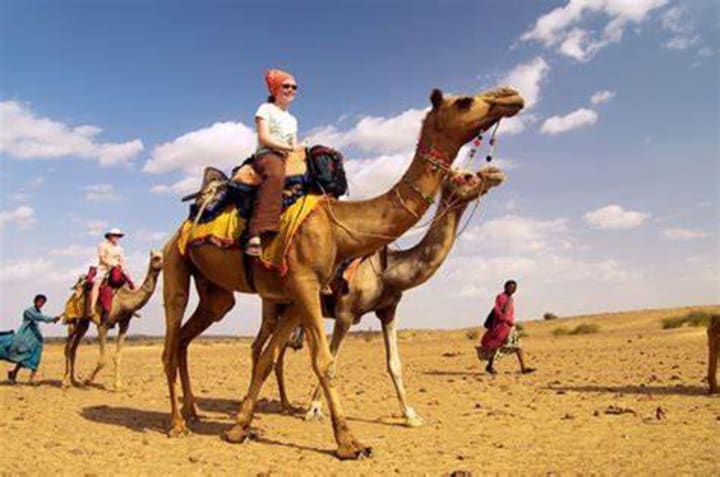
For a real adventure head out on a Camel Safari in the Thar Desert. During your camel ride, you’ll be able to enjoy miles of golden sand. The safari takes you to tourist destinations such as Meherangarh Fort and some of the others previously mentioned. You’ll also be delighted by Bishnoi villages, picturesque lakes, and wildlife habitats.
About the Creator
Rasma Raisters
My passions are writing and creating poetry. I write for several sites online and have four themed blogs on Wordpress. Please follow me on Twitter.


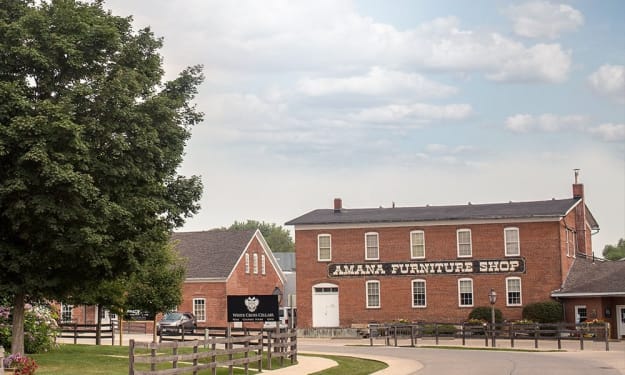



Comments
There are no comments for this story
Be the first to respond and start the conversation.